Introduction: In this article, Melissa Davenport Berry writes about the Salem witch trials of 1692 and the unearthing of the witches’ dungeon. Melissa is a genealogist who has a blog, AnceStory Archives, and a Facebook group, New England Family Genealogy and History.
Salem, Massachusetts, made headlines when the library collection of the well-known attorney and historian Abner Cheney Goodell went to the auction block in 1918. It was advertised as the greatest witchcraft library in the world, containing rare volumes on the supernatural – and more importantly, the 1692 Salem witchcraft history.
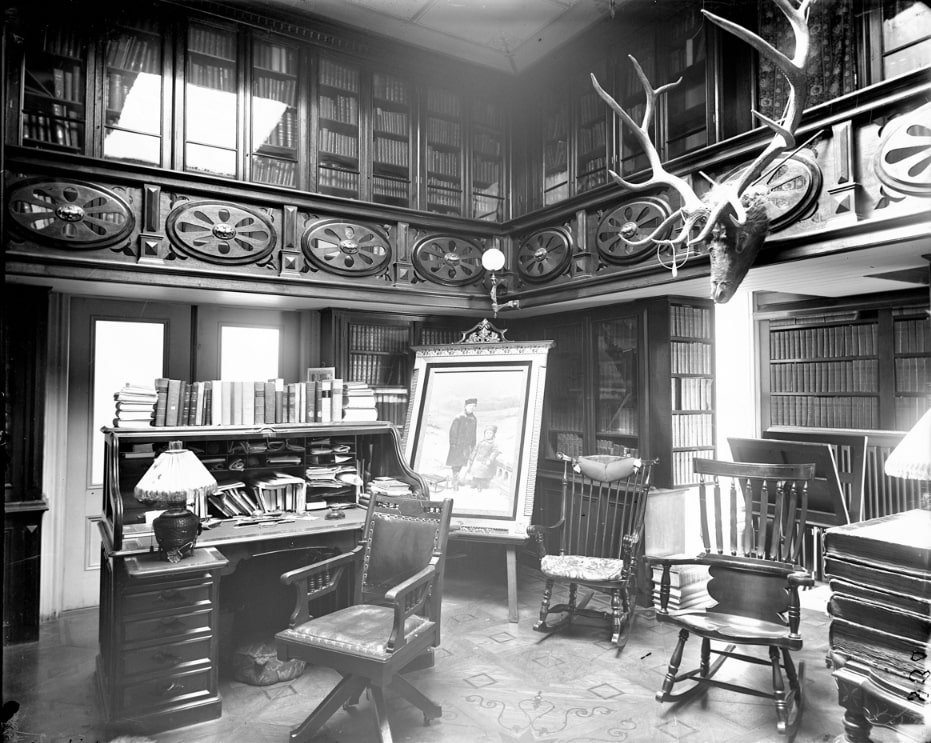
Abner (1831-1914) was born to Abner Cheney Goodell Sr. and Sarah Dodge Haskell (daughter of Aaron Haskell and Eunice Dodge). He married Martha Page Putnam (daughter of Alfred Putnam and Mary Page). He was a descendant of Robert and Catherine Kilham Goodell, who sailed from England in 1634. Both he and his wife had ancestors connected to the Salem witch trials.
He was passionate about preservation and served as president of several societies, including the Massachusetts Historical Society, the Essex Institute, the Colonial Society of Massachusetts, and the New England Historical and Genealogical Society.
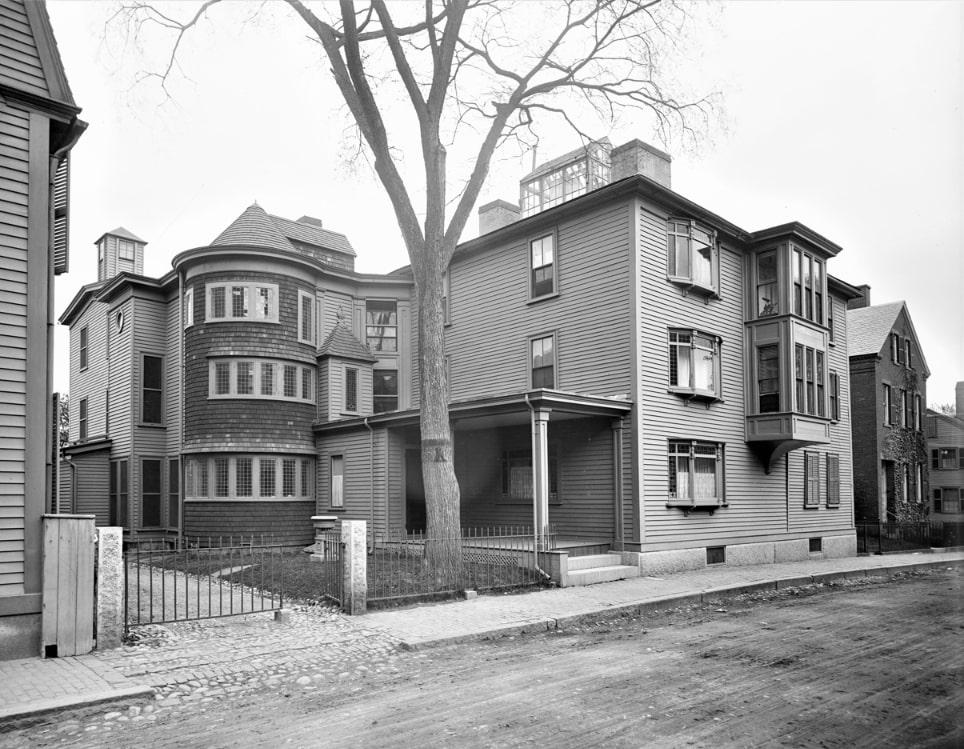
In 1906 the Boston Herald did a feature story on the Goodell home at 4 Federal Street in Salem, noting the house construction had some of the original timbers from the old jail where several victims accused of witchcraft in 1692 were confined.
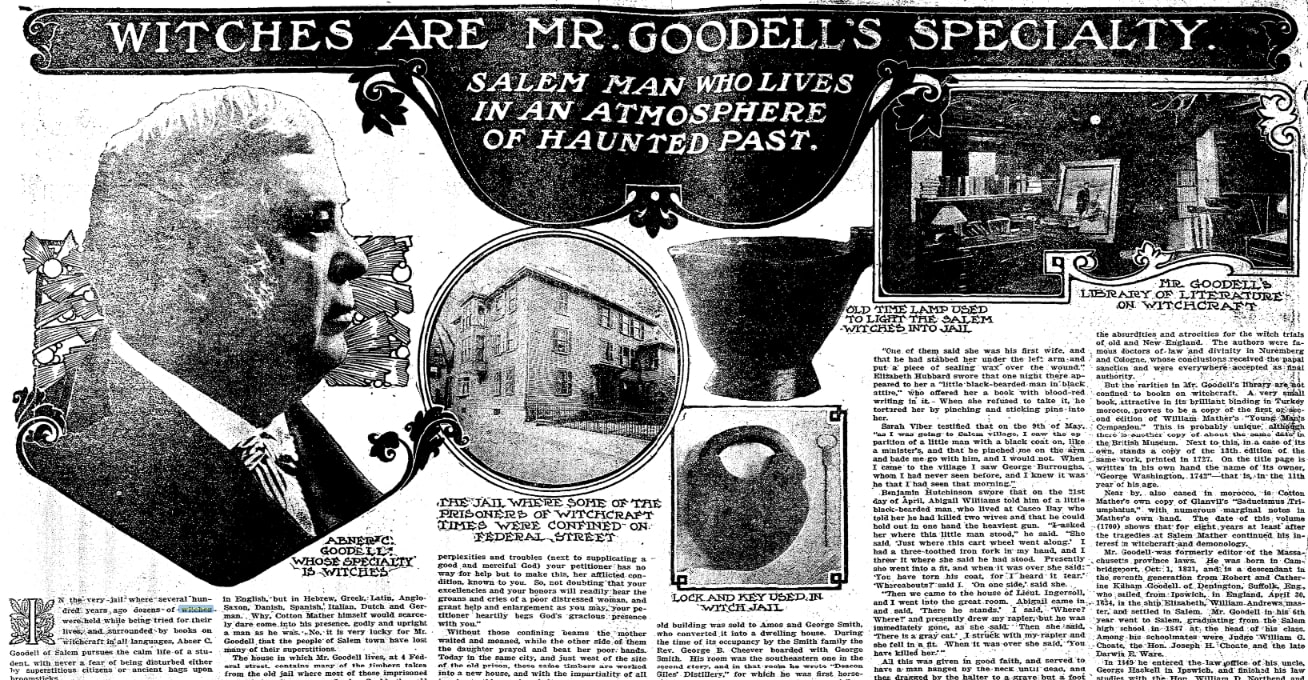
The old jail was torn down in 1763 and a new one was erected in 1813. Lumber from the original jail was recycled and used.
The old jail was sold to Amos and George Smith and became a house dwelling. Smith’s boarder, Rev. George Barrell Cheever, wrote Deacon Giles’ Distillery while he resided there, which brewed much trouble for him – but that story is for another time.
After the Goodell’s occupied the home its notoriety once again became more witchy. Its extensive library was described in the Herald article:
The library in the Goodell house is large, two stories in height, with a gallery around it, and finished in heavy black walnut. Here, in this literary workshop, are to be found several thousand volumes, besides innumerable pamphlets. Here are the books on the subject of witchcraft dating as far back as 1480, among them some extremely rare and curious books relating to the tragedies of 1692.
When I reached out to the acclaimed historian Richard Trask, he informed me Abner contributed serious scholarly publications on the Salem witch trials. That material is now housed at the Danvers Archival Center of the Peabody Institute Library, where Mr. Trask is the archivist.
The Herald mentioned the circumstances that brought the accused “witches” to the old jail, using the case of George Burroughs, charged with witchcraft, found guilty, and hanged. Here is the skinny:
Some of the testimony that sent the poor creatures into these jails is interesting. In the case of George Burroughs, charged with witchcraft, Ann Putnam gravely testified that, “On the 9th of May, 1692, the apparition of Burroughs appeared to her at night and grievously tortured her. After vainly urging her to write her name in a black book, he informed her that two former wives of his would appear. They did appear, wound about with winding sheets and with napkins over their heads.
“One of them said she was his first wife, and that he had stabbed her under the left arm and put a piece of sealing wax over the wound.” Elizabeth Hubbard swore that one night there appeared to her a “little black-bearded man in black attire,” who offered her a book with blood-red writing in it. When she refused to take it, he tortured her by pinching and sticking pins into her.
Sarah [Bibber] testified that on the 9th of May, “as I was going to Salem Village, I saw the apparition of a little man with a black coat on, like a minister’s, and he pinched me on the arm and bade me go with him, and I would not. When I came to the village I saw George Burroughs, whom I had never seen before, and I knew it was he that I had seen that morning.”
The Herald referenced a mother’s petition [Rebecca Fox for Rebecca Jacobs] to Gov. William Stoughton, one of the presiding judges over the trials, describing the horrid conditions and atrocities of the jail, writing “the plight in pathetically simple sentences.”
Back in the late 1950s a crusade was launched to clear the names of some of the victims that were tried and found guilty during the witchcraft trials.
One advocate was John B. Hatch, who said his crusade got started when he read material published by Abner on witchcraft – and even more so when he met the author’s son, Alfred Putnam Goodell, who in 1935 unearthed the actual dungeon that held the accused witch victims.
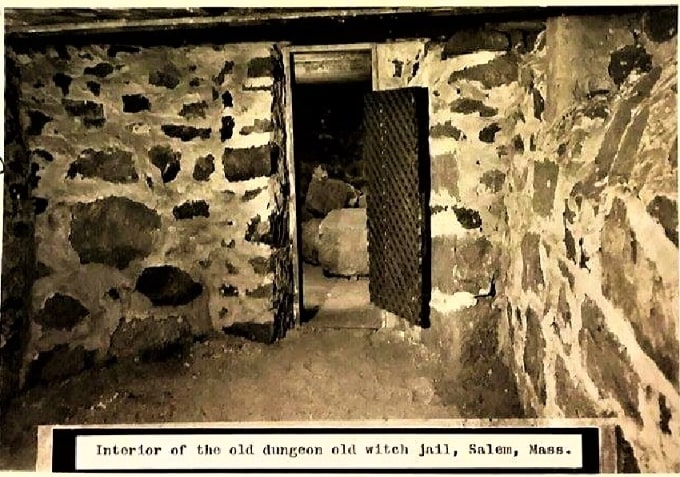
Here is a Denver Post article describing the discovery of the old jail.
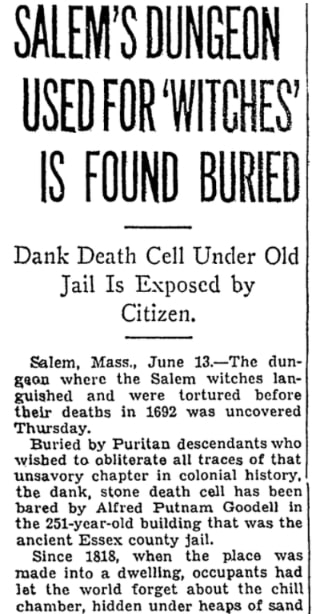
This article reported:
The dungeon where the Salem witches languished and were tortured before their deaths in 1692 was uncovered Thursday.
Buried by Puritan descendants who wished to obliterate all traces of that unsavory chapter in colonial history, the dank, stone death cell has been bared by Alfred Putnam Goodell in the 251-year-old building that was the ancient Essex County jail.
Since 1818, when the place was made into a dwelling, occupants had let the world forget about the chill chamber, hidden under heaps of sand and stone. But a few weeks ago the 59-year-old Goodell, who was born in the house and is descended from that Ann Putnam who was an accuser of the witches, decided that he owed it to history to expose the gloomy reminder of the witchcraft delusion.
According to sources at Salem State Archives, initially a historical marker was placed on the Goodell home in 1930 for the Massachusetts Bay Colony Tercentenary.
Then in 1935, after this discovery was made, Alfred and his wife Mary Ann (Mossip) began offering tours and the house became known as the “Old Witch Jail and Dungeon.”
The historical marker can be seen in this ad for tours of the house.
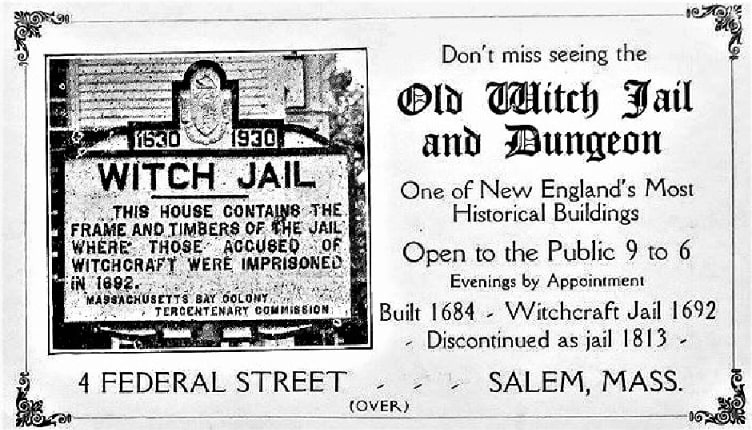
The tourist seekers could view artifacts of the jail. John B. Hatch was the custodian for many years.
Abner and his son were not the only notables in the family who worked diligently to preserve the historical relics associated with Salem Village.
Stay tuned for more…
Explore over 330 years of newspapers and historical records in GenealogyBank. Discover your family story! Start a 7-Day Free Trial
Note on the header image: witchcraft trial at Salem Village. The central figure in this 1876 illustration of the courtroom is usually identified as Mary Walcott. Credit: Wikimedia Commons.

How revelatory and interesting! I have to assume this is the jail where my 9th great grandma was held.
Elizabeth Hutchinson Hart (1622-1700): Accused and imprisoned during the Salem witchcraft trials, Elizabeth was born at Oulton, Suffolk, England, on 22 February 1622, daughter of Thomas Hutchinson and Anne Browne. She married Isaac Hart about 1650. She was living in Lynn, Massachusetts, when she was accused and arrested for witchcraft, having allegedly afflicted Mary Walcott, Abigail Williams, Mercy Lewis, and Ann Putnam Jr. She was indicted. See [Suffolk Court Records Case No. 2668, p. 149, Petition of Thomas Hart], but she was sent to prison in Boston on 18 May 1692 and held there until December.
Thank you for sharing Jenn. I have worked with the Hart family and published a few stories on them. They have a very interesting history.